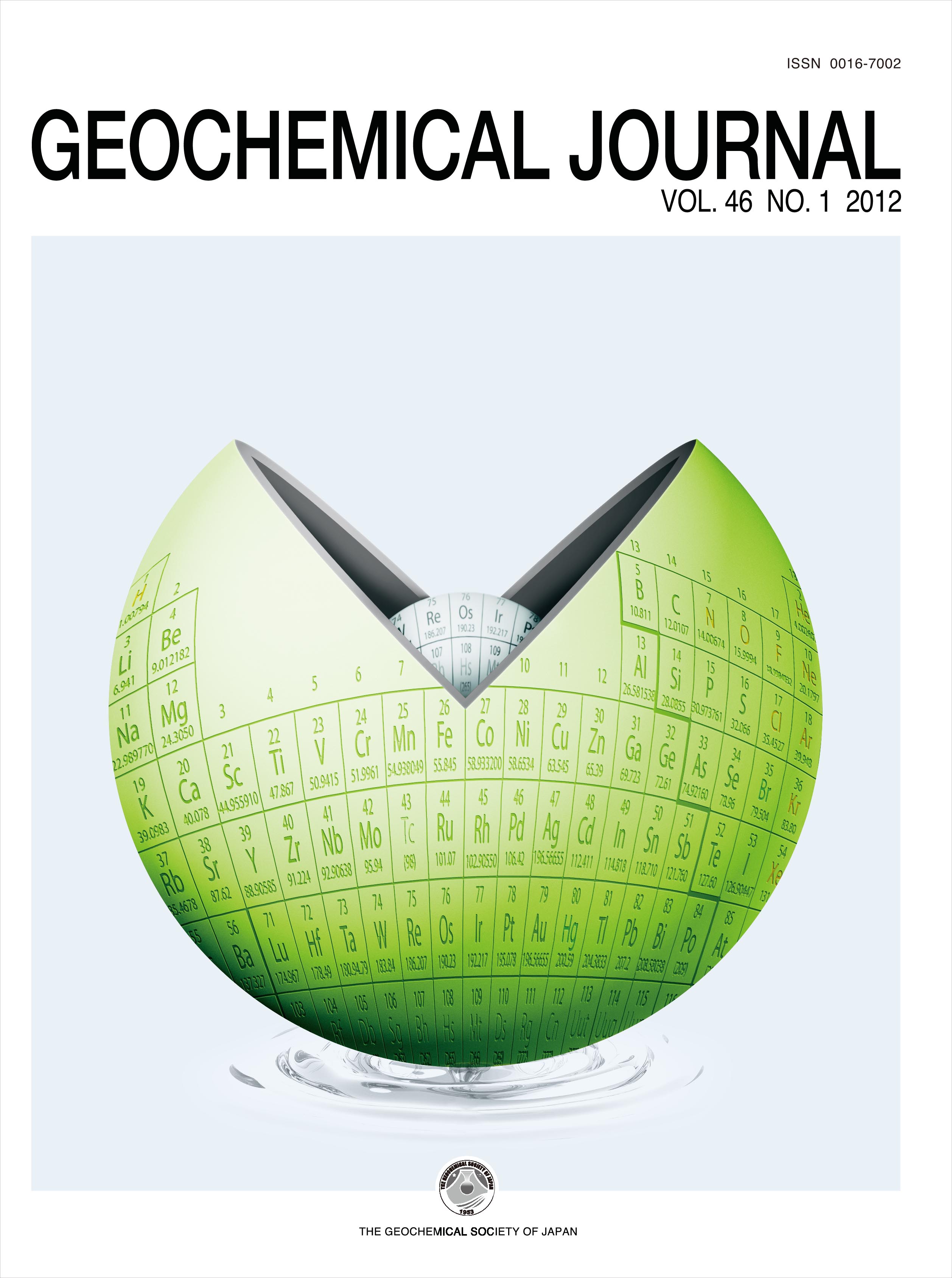
- |<
- <
- 1
- >
- >|
-
Chikashi Yoshimoto, Shoichi Itoh, Isao SakaguchiArticle type: ARTICLE
2024Volume 58Issue 1 Pages 1-8
Published: 2024
Released on J-STAGE: January 23, 2024
Advance online publication: December 12, 2023JOURNAL OPEN ACCESS FULL-TEXT HTML
Supplementary materialApatite is ubiquitous in various planetary bodies in the Solar System. Because its structure contains a hydroxy group, researchers have performed extensive investigations to determine the hydrogen isotopic composition of apatite to reveal the origins and evolution of water in planetary bodies. The hydrogen isotopic composition in apatite can change owing to diffusion. Although there have been several diffusion studies related to hydrogen in apatite, they vary in experimental conditions, such as the diffusion source and pressure, making it difficult to estimate the change in hydrogen isotopic composition. Herein, we report hydrogen diffusion experiments under a 2H2O/O2 vapor flow at 550°C–700°C using apatite slices with better surface conditions by adapting new polishing methods. 2H concentration depth profiles were obtained via secondary ion mass spectrometry, and the diffusion coefficients were obtained by fitting the profiles using Fick’s second law. The temperature dependence of the diffusion coefficients at 550°C–700°C is represented as the following expression:

This indicates a reduction in the influence of fast diffusion paths, reported by Higashi et al. (2017). These diffusion coefficients would be the hydrogen self-diffusion coefficients in apatite by lattice diffusion and should be employed instead. In addition, the activation energy of diffusion was consistent with oxygen diffusion under wet conditions, thus suggesting that hydrogen diffuses via a mechanism similar to that of oxygen in apatite.
View full abstractDownload PDF (1648K) Full view HTML
-
Ryo Fujita, Shun Nakano, Tetsuya Yokoyama, Akira IshikawaArticle type: ARTICLE
2024Volume 58Issue 1 Pages 9-27
Published: 2024
Released on J-STAGE: February 27, 2024
Advance online publication: January 30, 2024JOURNAL OPEN ACCESS FULL-TEXT HTML
Supplementary materialThe Os isotopic composition and abundances of highly siderophile elements (HSE; Re, Os, Ir, Ru, Pt, Rh, Pd, and Au) and volatile chalcophile elements (VCE; S, Ge, As, Se, Sn, Sb, and Te) in chondrites show considerable variabilities across different chondrite groups, which provide essential insights into understanding the elemental fractionation during the formation of chondrite parent bodies and their precursor materials. Here, we have developed a method using a sealed glass tube digestion to simultaneously measure the 187Os/188Os ratios and the abundances of HSEs, VCEs, and other elements including Mg, Al, Ca, and Mo in chondrites. This study evaluated the potential blank increase from the quartz tube digestion and subsequent chemical process and the loss of other elements from the Os extraction processes. The new method was validated by the repeated measurements of the Allende meteorite reference sample provided by the Smithsonian Institution (Smithsonian Allende). The elemental abundances were determined by the isotope dilution (ID) coupled with ICP-MS/MS, excluding those of Mg, Al, Ca, As, Mo, Rh, and Au that were determined by a combination of ID and internal standardization (IS). The reproducibility of ten replicate analyses generally yielded less than 10%, except for Sn, Sb, and Mo, which is consistent with existing literature data. The analysis of the Re-Os systematics of minute sample powders revealed insights into their chemical heterogeneity. In particular, this study gives compelling evidence that the chemical heterogeneity observed in the Smithsonian Allende is closely related to sample size.
View full abstractDownload PDF (2566K) Full view HTML
-
Wataru Nakamura, Phyo Thet Naing, Kenta Watanabe, Tatsuki Tokoro, Kei ...Article type: ARTICLE
2024Volume 58Issue 1 Pages 28-45
Published: 2024
Released on J-STAGE: February 27, 2024
Advance online publication: January 30, 2024JOURNAL OPEN ACCESS FULL-TEXT HTML
Supplementary materialMangrove creeks have large carbonate chemistry parameters (partial pressure of carbon dioxide (pCO2), dissolved inorganic carbon (DIC), and total alkalinity (TA)) owing to the porewater export by tidal pumping. In this study, the relationship between tidal oscillations and carbonate chemistry parameters was clarified, and CO2 emissions from mangrove creeks and swamps were evaluated in a mangrove forest in Japan, where the duration of swamp inundation was longer during neap tides owing tidal asymmetry. The pCO2 values in the mangrove creek ranged between 307 and 6036 μatm, with maximum values recorded at 4583 μatm during the spring tide (symmetric tide) and 6036 μatm during the neap tide (asymmetric tide). Spatiotemporal water sampling over a spring-neap tidal cycle revealed that the increase in the mangrove-derived DIC and TA varied between the inundated and exposed periods of the swamps, with DIC being produced more than TA during the inundated period. This suggests that the increase in the DIC/TA ratio as the duration of the swamp inundation increases controls the CO2 variations over a spring-neap tidal cycle in this region. Although high pCO2 values were recorded in the mangrove creeks, water-air CO2 emissions (integrating flux by inundated area) were limited to approximately 3.3% of the fate of the sequestered carbon, suggesting that approximately 94.6% of the DIC outwelled to the ocean was stored therein.
View full abstractDownload PDF (7797K) Full view HTML
- |<
- <
- 1
- >
- >|